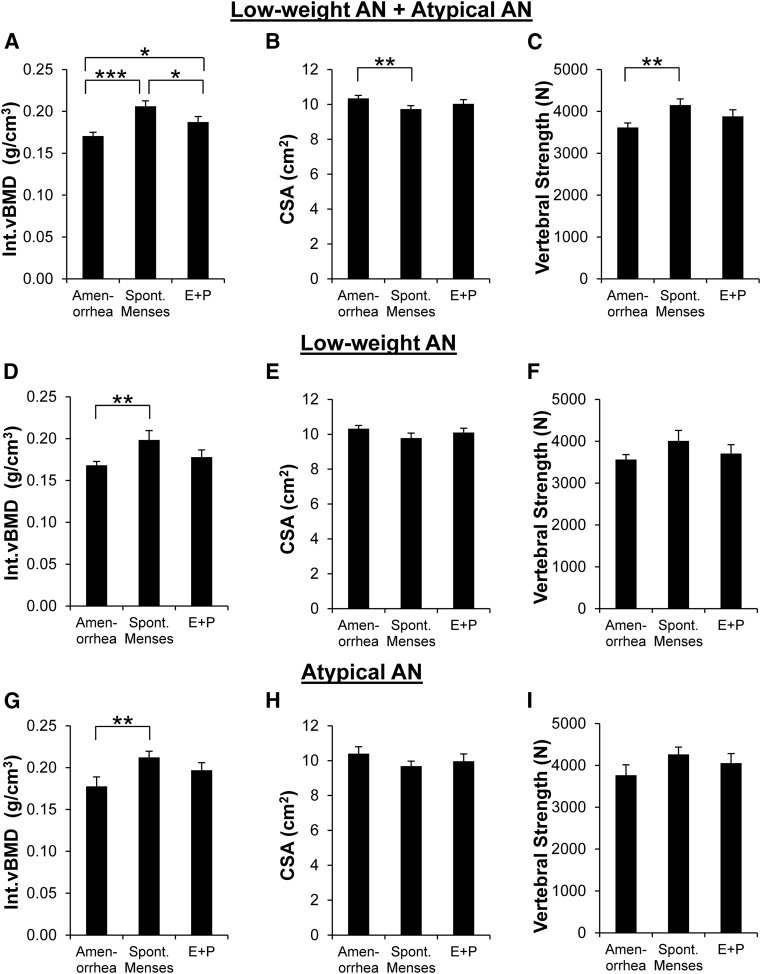Figure 3.
Int.vBMD, CSA, and vertebral strength in AN by current menstrual characteristics. Among all women with low-weight AN and atypical AN combined, (A) Int.vBMD was lowest in those with current amenorrhea (N = 50), highest in those with spontaneous menses currently (N = 34), and intermediate in those receiving E+P currently (N = 24). (B) CSA was higher in AN with current amenorrhea than AN with spontaneous menses currently. (C) Vertebral strength was lower in AN with current amenorrhea compared with AN with spontaneous menses currently. When analyzing the low-weight AN group individually, (D) Int.vBMD was lower in those with current amenorrhea (n = 37) compared with those with spontaneous menses (n = 15) and did not differ from those receiving E+P (n = 12); (E) CSA and (F) vertebral strength did not differ by menstrual characteristics. The same pattern was seen in the atypical AN group individually; (G) Int.vBMD was lower in atypical AN subjects who had current amenorrhea (n = 13) compared with those with spontaneous menses (n = 19) and did not differ from those receiving E+P (n = 12), and (H) CSA and (I) vertebral strength did not differ by menstrual characteristics. Results are reported as means ±SEM. Amenorrhea, current amenorrhea; Spont. Menses, spontaneous menses currently; E+P, receiving systemically absorbed E+P currently. *P < 0.04; **P < 0.01; ***P < 0.0001.

